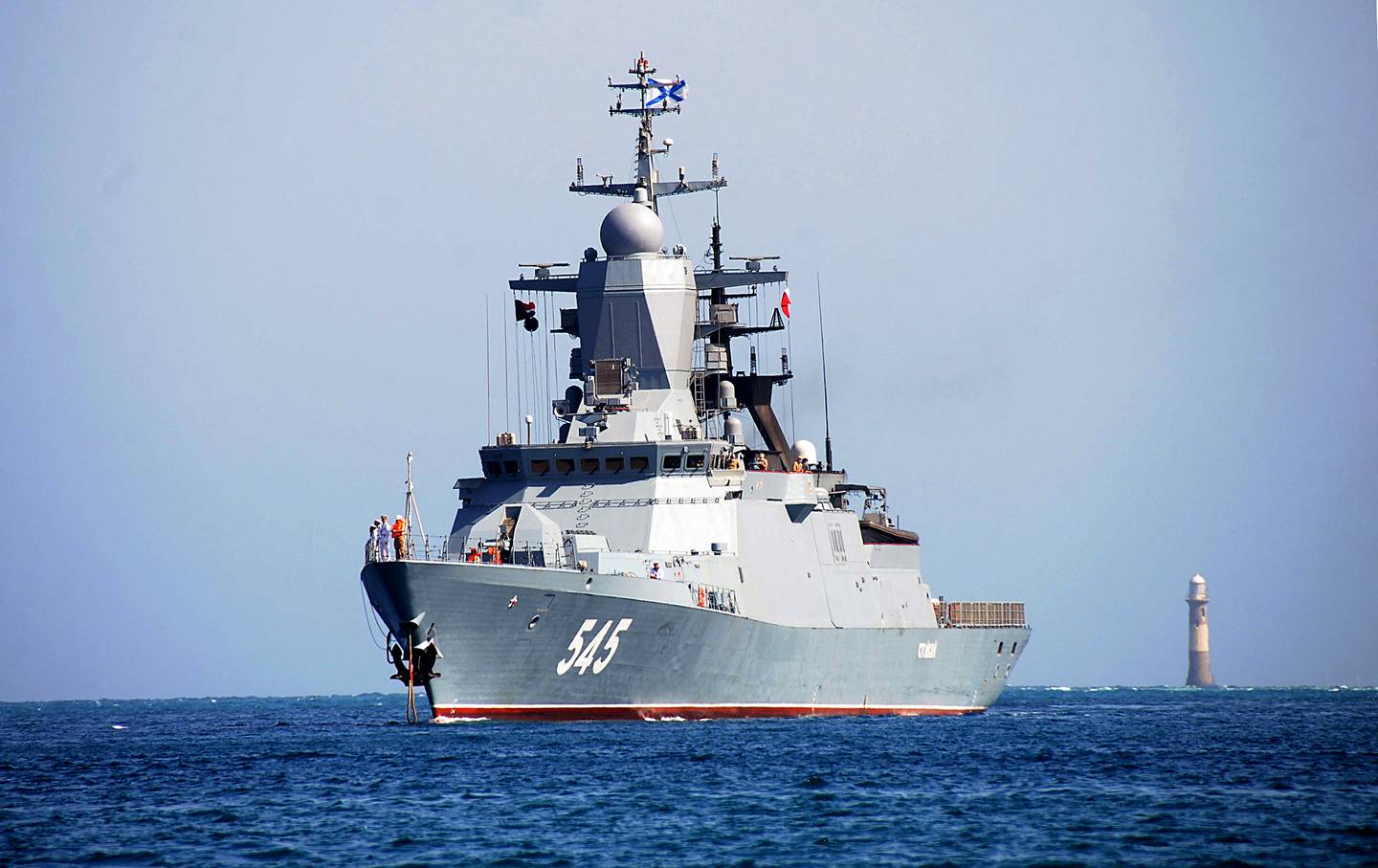MOSCOW — Russia plans to equip several Navy vessels using Kalibr missiles, a weapon with which one naval policy expert predicts the country will more widely arm its fleet.
Russia recently attacked Ukraine using Kalibr cruise missiles, among other projectiles.
Russian Defence Minister Sergei Shoigu announced Tuesday the future Lada-class submarine Kronstadt, which is under construction, will be able to fire Kalibr cruise missiles. That same day, state-run news agency Tass reported the corvette Steregushchiy will receive a new Kalibr-NK missile system during modernization work at the Kronstadt Marine Plant.
And Mikhail Budnichenko, CEO of the shipyard Sevmash, said earlier this month the nuclear missile cruiser Admiral Nakhimov will be armed with Kalibr-NK missiles, following repairs and modernization work.
Submarine construction
The keel laying of the diesel-electric submarine Kronstadt took place in 2005, but construction was suspended. It resumed in 2013 and is ongoing, after which the boat will join the Northern Fleet.
The transfer to the fleet was planned in 2019, but was postponed several times due to noncompliance with Defence Ministry requirements. The fleet will likely take delivery of the boat this year, according to the Russian naval policy expert, who spoke to Defense News on the condition of anonymity for security reasons.
The submarine is expected to have a launcher that can hold 10 Кalibr missiles.
“Thanks to the Kalibr missiles, submarines will be able to hit not only land and sea targets, but also submarines,” the expert said.
Defense industry experts in 2017 estimated the cost of the Lada-class sub at $350 million, but increased the approximation to $700 million in 2018.
Corvette update
The corvette Steregushchiy was produced under the shipbuilding program dubbed Project 20380. It and the other ships made under that effort were equipped with the Uran anti-ship missile system, which consists of two four-container, inclined launchers with an ammunition set of eight Kh-35U missiles.

Now the lead ship of its class, the Steregushchiy — constructed 17 years ago — is undergoing a midlife update, during which it will receive a universal shipborne firing complex 3S14. That technology will allow the vessel to launch Kalibr missiles and, eventually, hypersonic Zircon missiles.
“The next ships of this class will also receive Kalibr missiles in the course of their modernization,” the naval expert said.
In an interview with a corporate newspaper, the CEO of the Kronstadt Marine Plant, Anatoly Beloev, said modernization of the Project 20380 corvette will not begin until the end of the spring or the beginning of the summer. By that time the plant is required to hand over a large landing ship to the Defence Ministry, which would make room for new projects. The timeline for the modernization work is not yet determined, Beloev said.
Per annual reports from the shipyard Severnaya Verf, which makes corvettes, it appears the cost of such as vessel in 2016 was 17-29 billion roubles (U.S. $224-382 million).
Warship work
The nuclear missile battlecruiser Admiral Nakhimov has undergone repairs and modernization since 2013. More than 150 enterprises have participated in the effort.
Last year, the installation of systems and equipment took place. The cruiser is currently at the outfitting quay, and it will begin trials in the spring of 2023, Budnichenko told a corporate magazine.
Delivery to the Navy was postponed several times, and the service is now expected to receive the ships in 2024.
As part of the modernization effort, the ship will carry 10 3S14 launchers, with eight Kalibr-NK cruise missiles in each, instead of 20 heavy supersonic Granit missiles.
In total, there will be 80 attack missiles on the vessel — a record number for the Russian surface fleet, according to the naval expert.
The Kalibr missile family is made up of several variants, including long–range cruise missiles and anti-submarine torpedoes. Russia decided as far back as the 1990s to equip naval platforms with the weapon.
Almost all newly built and most upgraded units receive this system, the naval expert said.
The Associated Press contributed to this report.
Maxim Starchak is a Russia correspondent for Defense News. He previously worked as an editor for the Russian Defence Ministry and as an expert for the NATO Information Office in Moscow. He has covered Russian nuclear and defense issues for the Atlantic Council, the Center for European Policy Analysis, the Royal United Services Institute and more.








